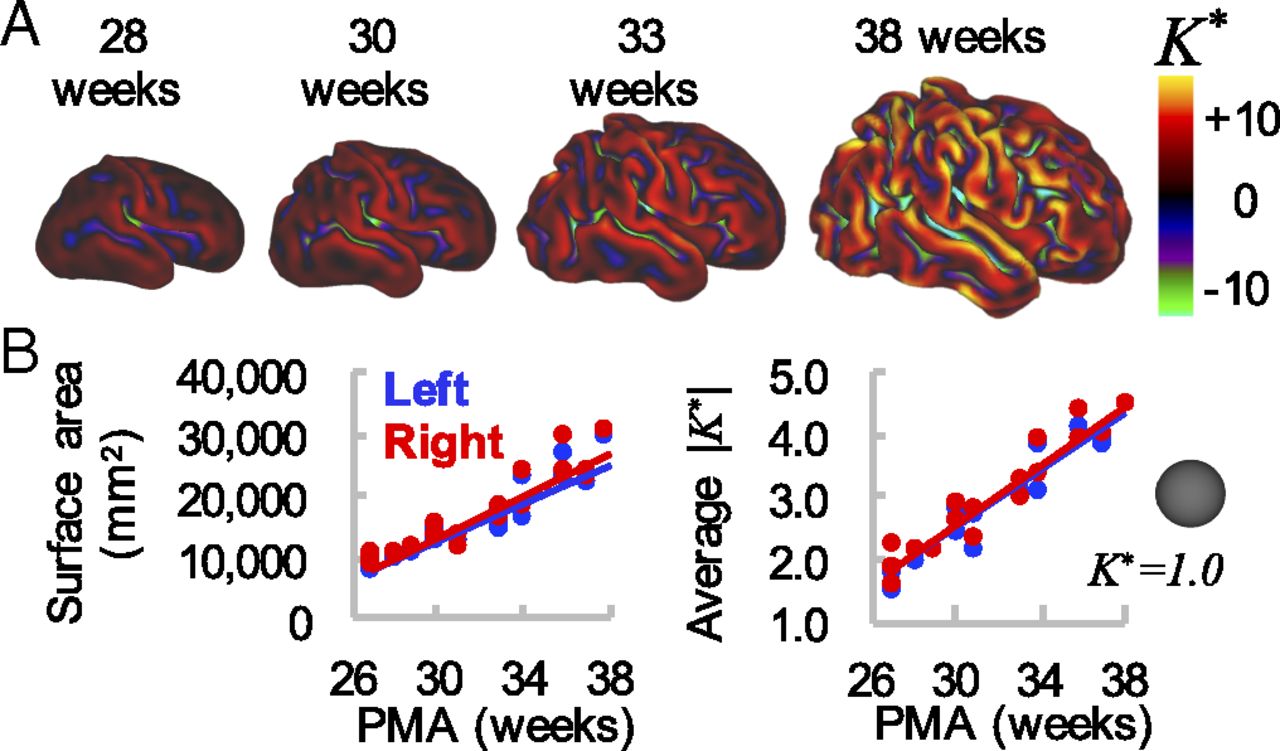*********
UPDATE:
1. The final phase for submission has been extended until the 15th of July, according to the submission deadline for MLCN workshop. Submissions for the final phase will open on the 4th of July.
2. For this first edition of the SLCN challenge, submissions will not support the use of metadata as external data input in models.
*********
What is SLCN?
SLCN (surface learning for clinical neuroimaging) is a new MICCAI workshop aimed at promoting the development of deep learning methods suited for cortical surface data. This year, participants are tasked with predicting developmental phenotypes (age at birth) from cortical surface data acquired as part of the Developing Human Connectome Project.
The challenge of identifying neurodevelopmental biomarkers
Recently, [Fawaz et al., 2021; Dahan et al., 2022] proposed a novel benchmark for prototyping tools for cortical analysis based on the regression of clinical phenotypes from the Developing Human Connectome Project (dHCP) [Makropoulos et al., 2018; Bozek et al., 2018] - a unique open dataset of multimodal neonatal brain images, acquired from preterm and term neonates between 24 and 45 weeks postmenstrual age. Over this period of late gestation, the human brain undergoes rapid growth and maturation, characterised by highly dynamic and organised cellular and molecular processes (Figure 1). Disruptions to these processes, for example due to preterm birth, can have serious consequences resulting in significant increased risk of those neonates developing neuropsychiatric conditions including autism spectrum disorder, attention deficit hyperactivity disorder (ADHD), schizophrenia, bipolar affective disorder and major depressive disorder in later life [Nosarti et al., 2007; Nosarti et al., 2012].

Figure 1. Global measures of cortical surface area and folding increase over time. (A) Cortical midthickness surfaces for individual hemisphere at 28 wk, 30 wk, 33 wk, and 38 wk PMA. Color overlay represents nondimensional curvature, K*, a useful metric of the degree of folding. (B) Total cortical surface area (Left) and average magnitude of K* (Right) increase with time. However, these global measures do not provide information about regional variations in maturation and morphology. From [Garcia et al., 2018].
Tasks
The goal of this challenge will therefore be to elicit submissions of novel methods for registration-free or registration-robust cortical phenotype regression, with emphasis on interpretable or explainable machine learning methods which deliver biomarkers predictive of risk for neurodevelopmental impairment. These will be benchmarked on the tasks of regression of gestational age at birth (seen as a correlate of prematurity) on both registered and native space cortical surface data.
